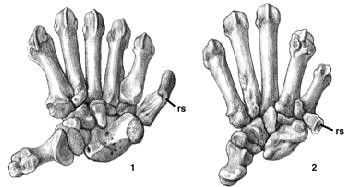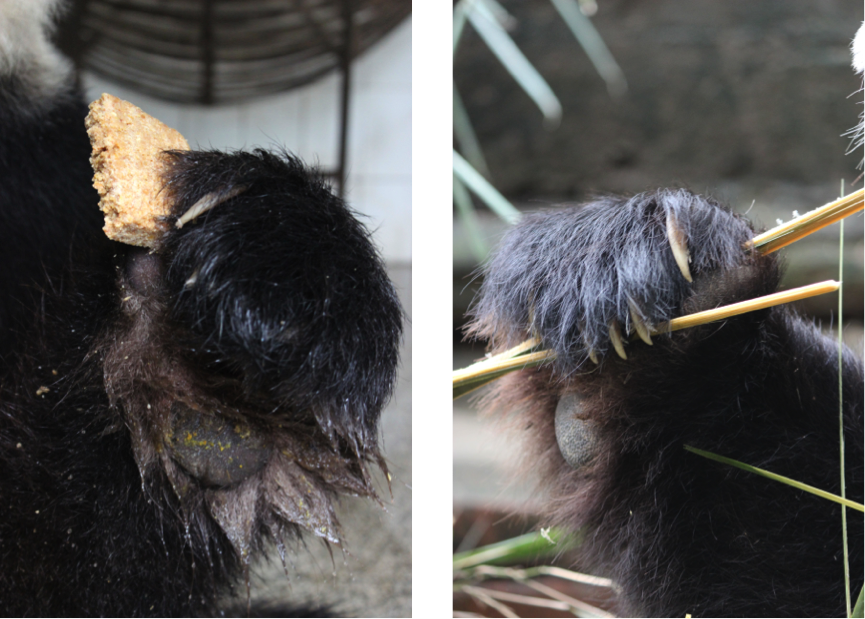You’ll remember that Fun Fact #1 was about the panda bears bamboo diet. Here’s fun fact #2!
Fun Fact #2: Giant Pandas have an extended wrist bone that acts like an opposable thumb [1]
The pseudo thumb of the giant panda has to be one of evolutions greatest adaptations. What we are made for and how we evolve to survive a changing environment, diet, climate, and situation can be two completely separate things. This is the case with the giant panda. When they switched to bamboo their physical morphology was not made to be able to eat bamboo with the ease that other herbivores or omnivores do. Pandas’ were not born with an opposable thumb, making handling the bamboo very difficult. Over time natural selection took place through a selective advantage of greater ease to manipulate food and the panda evolved a “pseudo-thumb”. The bone which protects a vital ligament in the wrist grew in the giant panda. This bone, known as the radial sesamoid, is found in other carnivores, just not as pronounced.

On the left is the hand of a modern giant panda. Notice the enlarged radial sesamoid which makes it appear as if the panda has 6 digits. On the right is the hand of an extinct carnivorous mammal, Simocyon batalleri, a possible panda ancestor with the same sesamoid bone in its remedial form.
Above the bone is a pad, which acts to enable a panda to handle bamboo with ease. However their pseudo thumb is not like ours, it cannot move. This forced scientists to believe that this bone has evolved purely because of the switch in the giant pandas’ diet.
– Grace
[1] Endo, H., Yamagiwa, D., Hayashi, Y., Koie, H., Yamaya, Y., and Kimura, J. (1999) Role of the giant panda’s ‘pseudo-thumb’. Nature 397, 309-310.


That’s quite the bear claw! I wonder what they ate before switching to bamboo?
The theory is that they were omnivores like other bears and then they happened to fill the bamboo niche more and more . . . fascinating creatures!